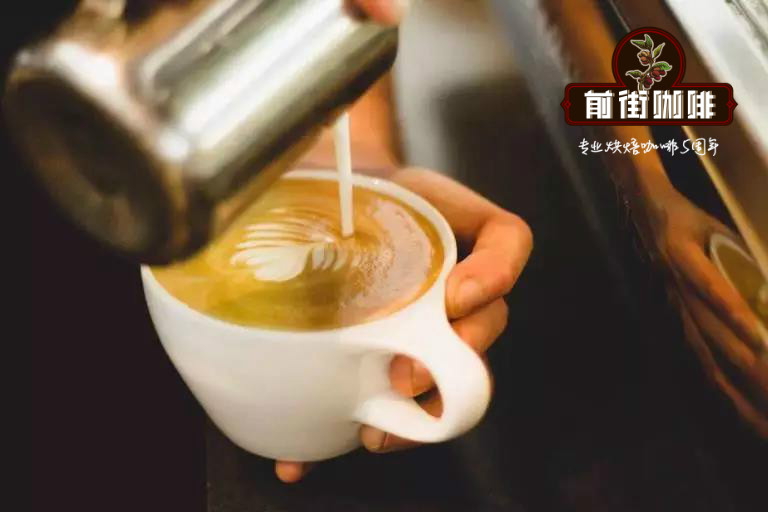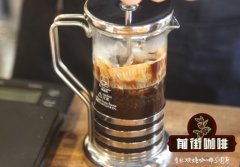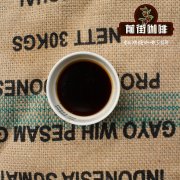How to extract a good Espresso Italian concentrate? What are the key factors that affect it?

Have you found that it's easy to make coffee, but it's hard to get a cup of coffee that everyone praises, and it's even more difficult to extract a good cup of Espresso. There is a saying that details determine success or failure, and the key to extracting a good Espresso is also the details, which is also the most important thing about becoming a barista.
Several key steps of Espresso Italian concentration by extraction
Basic parameters of Espresso
As with any coffee, you need to know the amount of coffee powder (and the thickness of the powder), the amount of water, the extraction time and the final amount of coffee extracted. All of these factors are closely related to making coffee, but for Espresso, you can ignore the water factor at the moment.
Let's break it down:
Generally speaking, we will make a standard according to the extraction time of 25 seconds, and try to follow this time, of course, you can also do some different tests according to the situation of each kind of beans.
The amount of coffee powder will depend on the size of your powder bowl (single and double), requiring 8-13 grams of coffee powder for each serving of Espresso extracted.
A serving of Espresso is usually 25-35 milliliters, which can be easily adjusted by other parameters.
But keep in mind that these parameters are a flexible reference policy for you, not fixed rules that you must follow. Different coffee beans need to be treated differently, some require longer extraction time, while others, on the contrary, the degree of roasting and grinding of coffee beans will also affect each parameter.
When you are learning how to extract Espresso, you can use these rules as a reference, if you want to make greater progress, you can keep trying. Remember: the final taste is the key, and you don't know what the extracted Espresso looks like until you drink it. These parameters will help you extract a good Espresso, but they are not the criteria for customer ratings.
Now that we have the parameters of Espresso, let's get started.
1. Cups
Before using the coffee cup, remember to warm the cup and rinse with hot water. The hot coffee cup can better maintain the flavor of the coffee.
2. Extraction handle & powder bowl
Next, check that your extraction handle is clean and dry, keeping in mind that residual coffee grounds can affect the taste of Espresso. A wet powder bowl will also affect the extraction of Espresso, which will moisturize the coffee powder.
3. Grindability and flour content of coffee beans
You may need to adjust the condition of the bean grinder:
1. When the temperature, pressure and humidity change suddenly, especially in the open space, it is most obvious.
two。 When the old and new coffee beans are replaced: when a bag of coffee beans is used up and the beans are poured into the newly opened beans alternately. Because the roasting date, batch and cultivation period of newly opened coffee beans may be different, the extraction situation is very different.
3. Continuous brewing: the grinding degree will suddenly become very fine after 6 cups of continuous 5 murmur. this is because after the continuous use of the bean grinder, the heat energy of the motor conducts heat to the cutter head, plus the heat energy produced by the friction between the cutter head itself and the coffee beans. as a result, the gap between the upper and lower cutters becomes very fine due to thermal expansion and cold shrinkage.
The humidity and storage time of coffee beans are constantly changing, and the wear degree of bean grinder blades has also changed over time, so baristas should adjust the bean grinder regularly to ensure that the ground coffee powder remains perfect.
When the coffee bean enters the grinder, the blade in the grinder will crush the coffee bean into powder. The smaller the distance between the blade and the blade, the smaller the coffee beans will be ground into smaller particles.
The finer the grinding particles are, the tighter they are, and the more difficult it is for the water to pass through, thus greatly prolonging the extraction time. On the contrary, if the distance between the blades increases, the ground particles will become rougher, the flow of water will be easier to pass through, and the extraction time will be faster.
Generally, we will use the last extraction parameters to do a cup concentration, the time is controlled within 25-30 seconds, the amount of single powder is 13-14 grams, and the amount of double-end powder is about 20 grams.
Put the ground coffee powder into a powder bowl and control the degree of grinding and the amount of powder to ensure that it is not underextracted or overextracted (insufficient extraction will cause sour taste, excessive extraction will increase bitterness). If you have a bean grinder that can be accurately calibrated, it can be easily controlled. If not, please use an electronic scale.
So how to practice powdering?
1. Prepare the electronic scale.
Weighing the powder before each extraction is a necessary operation for making perfect Italian concentration. Even if it is a quantitative bean grinder, I suggest you regularly check the weighing accuracy of the bean grinder. After all, no matter how advanced the machine is, there will inevitably be errors and failures.
2. Rotating powder.
Whether the hand is dialed or straight out, as long as the coffee powder does not fall completely vertically, the powder layer will still show a certain degree of deviation under the influence of lateral acceleration, for example, when pulling the powder by hand, the effect of hard pulling is different from that of gently pulling-the harder the more to the left.
At this point, it is necessary to keep the powder at a uniform speed and rotate the handle at a uniform speed to keep the powder evenly distributed to different positions of the powder bowl-of course, it is impossible to be absolutely uniform, but at least it is much better than fixed powder.
After receiving the powder, then it is cloth powder!
Our common ways of distributing powder are as follows:
First, scraping flat cloth powder method.
The method of scraping flat cloth powder has three sharp tools: powder bin cover, bamboo and fingers. The method of scraping flat cloth powder is one of the most common and earliest contact methods for beginners. It usually cooperates with the movements such as pushing back and forth, and is divided into "square cloth powder" scraped around and left and right, "rotary cloth powder" scraped flat by 360 degrees, and so on.
Second, gently pat and knock the cloth powder method.
Tapping and tapping are two movements, but they are usually used continuously. The palm quickly taps the bottom of the handle and shakes the powder pile evenly, supplemented by a straight up and down tap, which can effectively eliminate the large gap in the powder layer, make the coffee powder pile denser, and increase the amount of powder that can be contained in the powder bowl.
Third, the method of appliance-assisted cloth powder.
When it comes to auxiliary cloth powder, of course, each shows his or her magical powers. According to all kinds of artifacts on the market, there are mainly several kinds: ① stirring or shaking well; ② smoothing the surface; ③ sieve dispersion; ④ rotating distribution.
4. Cloth powder
Our common ways of distributing powder are as follows:
First, scraping flat cloth powder method.
The method of scraping flat cloth powder has three sharp tools: powder bin cover, bamboo and fingers. The method of scraping flat cloth powder is one of the most common and earliest contact methods for beginners. It usually cooperates with the movements such as pushing back and forth, and is divided into "square cloth powder" scraped around and left and right, "rotary cloth powder" scraped flat by 360 degrees, and so on.
Second, gently pat and knock the cloth powder method.
Tapping and tapping are two movements, but they are usually used continuously. The palm quickly taps the bottom of the handle and shakes the powder pile evenly, supplemented by a straight up and down tap, which can effectively eliminate the large gap in the powder layer, make the coffee powder pile denser, and increase the amount of powder that can be contained in the powder bowl.
Third, the method of appliance-assisted cloth powder.
When it comes to auxiliary cloth powder, of course, each shows his or her magical powers. According to all kinds of artifacts on the market, there are mainly several kinds: ① stirring or shaking well; ② smoothing the surface; ③ sieve dispersion; ④ rotating distribution.
Tap the edge of the powder bowl so that the coffee powder is evenly distributed if you have a cloth powder tool you can use. This step is very important, it will ensure that there is no too large gap between the coffee powder, the gap is too large due to the channel effect of water, the water will gather more toward the gap during extraction, rather than evenly through the coffee powder, this will cause some coffee powder to be over-extracted.
5. Pressing powder
The pressing powder is to tighten the loose coffee powder through a certain amount of pressure so that the pressurized hot water can penetrate evenly.
The direction is straight down. If the pressure is inclined, the high-temperature and high-pressure hot water coming out of the boiling head will seek the infiltration of the layer with the least resistance, resulting in uneven extraction. At the same time, it is easy to have the channel effect that we often talk about.
The power of pressing powder and what kind of powder hammer you use does not matter much, as long as you press the powder tightly. Therefore, it is all the more important to keep the powder pressing force consistent every time.
The purpose of this step is also to eliminate the gap between coffee powder and ensure that coffee powder is evenly distributed.
Press the coffee powder with a powder hammer to make sure your arm is exerting force vertically and evenly along the coffee powder. The usual saying is that it takes 30 pounds of pressure, and you don't have to fully comply with it. Apply force vertically to ensure that the surface of the coffee powder is smooth, which avoids inconsistent extraction.
6. Fix pressed powder
Use the powder hammer to modify the coffee powder surface, place the powder hammer on the coffee powder, and then rotate, which will eliminate the small ridges on the coffee powder surface and ensure that the coffee powder surface is flat and smooth.
7. Clean the powder bowl
Imagine that you ordered a cappuccino and drank coffee grounds in the cup. To avoid this, be sure to clean the coffee powder around and around the edges of the bowl.
8. Wash the boiled head
Before installing the handle, you should learn to clean the brewing head on the coffee machine, which will remove the coffee grounds left on it. Do not ignore this step, if there is a residual coffee grounds to enter, the final taste will be inconsistent.
9. Extract Espresso
Finally, put the prepared handle on the coffee machine, press the extraction button, and start extracting your Espresso. Be sure to extract it immediately after loading it. If you come back 2 minutes after you answer the phone, everything in front of you will be done for nothing.
10. Serve coffee
Whether the coffee machine automatically sets the extraction time, or you manually press the stop button after 25 seconds, once the extraction is complete, the coffee cup can be removed from the coffee maker tray. A cup of Espresso is finished, you can serve it directly to the guest, or you can milk and start making lattes or cappuccinos.
11. Throw away pressed powder
Remove the handle from the coffee maker and pour the extracted coffee grounds into a special box. Remember never to skip this step, after all, let the coffee grounds on the coffee machine stew, it is not easy.
12. Cleaning treatment
Rinse your handle to welcome the next Espresso.
13. Wash the boiled head
Turn on the water button and wash your head with a small brush. You need to get rid of the coffee grounds completely, or it will spoil your next cup.
14. Replace the handle
Reinstall the handle back to the coffee maker to keep the handle clean and hot and not look for the handle everywhere when making the next cup of Espresso.
Important Notice :
前街咖啡 FrontStreet Coffee has moved to new addredd:
FrontStreet Coffee Address: 315,Donghua East Road,GuangZhou
Tel:020 38364473
- Prev

How should the coffee be ground? How should the coffee be preserved after grinding? Grinding method of coffee powder
Professional coffee knowledge exchange more coffee bean information Please pay attention to the coffee workshop (Wechat official account cafe_style) Coffee grinding should be based on the principle that the car is now eye-catching. Basically, after the preparation work before making coffee is done, the last step is to grind the coffee. Do not grind a large number of coffee beans into powder and save them at home, it is better to use them in the store than uncle beans.
- Next

Is Vietnam iced milk coffee good?
Vietnamese iced coffee (Vietnamese: C ph / coffee, literally meaning iced coffee) is a kind of dripping coffee. With milk, it is called Vietnamese iced milk coffee (Vietnamese: c ph nu) in North Vietnam, which literally means iced coffee with condensed milk. The drip container used in Vietnamese coffee has multiple holes at the bottom, so there is no need to use filter paper. When actually drinking it, it usually starts with the coffee.
Related
- What is the Philharmonic pressure? How to use Philharmonic pressure to make delicious coffee
- Why does a hand grinder have more fine powder than an electric grinder?
- In addition to the hot mom, what is the difference between the versions of EK43 | ditting and Mahdi ek43?
- What kind of equipment do you need to make coffee by hand? Introduction to novice starter cooking equipment tools
- Espresso needs to be ground how thick and thin scale entry Italian Coffee Machine Bean Grinder investigation and Grinding course
- How much does it cost to open a small private cafe? How much does it cost to learn coffee? How to operate it?
- The difference between the flavor characteristics of hand-brewed coffee and coffee maker is hand-brewed coffee really better than coffee maker? Can I use a coffee machine to make coffee beans by hand?
- The difference between 01 and 02 of hario v60 filter cup what is the difference between 01 and 02 filter cup opening and cooking flavor
- What's the difference between the smart cup and the French kettle? Which is better, the French kettle or the Smart Cup?
- What's the difference between a smart cup and a V60 filter cup? The difference between the taste of smart cup and hand-brewed coffee

